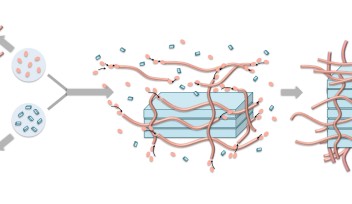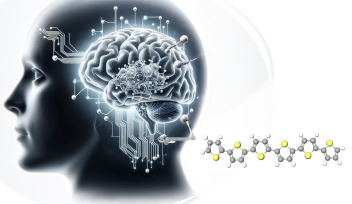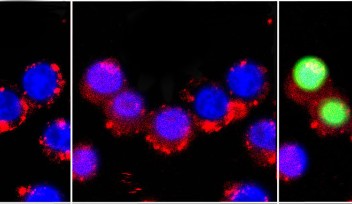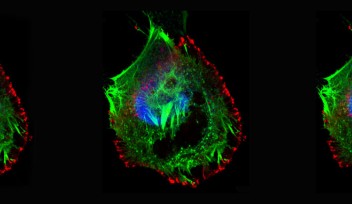Cheap, eco-friendly catalyst opens new possibilities for organic molecules built from pyruvate

Highlights
- Scientists have developed an organic catalyst system that improves the process of making organic molecules from pyruvate
- The molecules that can be built from pyruvate include glycolic acids and amino acids, which are used for biomedical research and in pharmaceuticals
- The organic catalyst is cheaper, stabler, safer, and more environmentally friendly than conventional metal catalysts used in industry
- The organic catalyst encourages pyruvate to react by donating electrons, rather than receiving them, increasing the range of products that can be easily synthesized
- The organic catalyst system is also highly selective about which mirror-image form the final product takes, which is important as different mirror-image forms display different properties
Press release
Chemists at the Okinawa Institute of Science and Technology Graduate University (OIST) have developed an organic catalyst that can drive reactions using pyruvate – a key biomolecule in many metabolic pathways – that are difficult and complicated to achieve using conventional industrial techniques.
The research, recently published in Organic Letters, is an important step towards simplifying the production process and increasing the range of molecules that can be built from pyruvate, like amino acids or glycolic acids, which are used in drug discovery efforts and medications.
“Catalysts, substances which control and accelerate chemical reactions without being included into the final products, are crucial tools for chemists,” said Santanu Mondal, a PhD candidate in Chemistry and Chemical Bioengineering Unit at OIST and first author of the study. “And organic catalysts, in particular, are set to revolutionize the industry and make chemistry more sustainable.”

Currently, metal catalysts are used in industry, which are often expensive to obtain and produce hazardous waste. Metal catalysts also react easily with air and water, making them difficult to store and handle. But organic catalysts are formed from common elements, like carbon, hydrogen, oxygen, and nitrogen, so they are much cheaper, safer and more environmentally friendly.
“On top of these advantages, our newly developed organic catalyst system also promotes reactions using pyruvate that aren’t easily achievable using metal catalysts,” added Santanu.
In all chemical reactions, he went on to explain, molecules can react by either giving away electrons, or receiving them. Pyruvate is much better at receiving electrons when it reacts and is typically used this way in industry, to produce organic alcohols and solvents. But within our bodies, protein catalysts called enzymes can drive reactions in which pyruvate donates electrons to produce molecules like fatty acids and amino acids.
By taking inspiration from these enzymes, the researchers designed a catalyst system made of two small organic molecules, an acid and an amine, that forces pyruvate to act as an electron donor.
In the reaction, the amine binds to pyruvate, making an intermediate molecule. The acid then covers up part of the intermediate molecule, while leaving another part, which can donate electrons, free to react and form a new product.
Importantly, the catalyst system is highly selective about which form of the product it will make. Like our hands, many biomolecules are asymmetric and can exist in two forms that are mirror-images of each other. These molecules look similar, but often have differing properties.

“Organic catalysts can be designed in a way that at the end of the reaction, only one of these mirror-image forms is made,” said Santanu. “This is particularly beneficial in the pharmaceutical industry, where one of the forms may be an effective treatment, but the other form may be toxic.”
For the pyruvate reactions, the researchers were able to selectively choose which of the two mirror-image forms of the final product to make, by changing which mirror-image form of the amine was used to catalyze the reaction.

Currently, the organic catalyst system only works when reacting pyruvate with a specific class of organic molecule, called cyclic imines. But ultimately, the research team dream of creating a next-generation catalyst for pyruvate that is universal, meaning that it can speed up reactions between pyruvate and a broad range of organic molecules.
“With a universal catalyst, chemists would be able to easily make an array of various products from pyruvate, in both mirror-image forms,” said Santanu. “This would have many meaningful impacts on society, such as speeding up the development of new drugs.”
Article Information
Title: Control of Reactions of Pyruvates by Catalysts: Direct Enantioselective Mannich Reactions of Pyruvates Catalyzed by Amine-based Catalyst Systems
Journal: Organic Letters
Date: February 28th 2022
DOI: 10.1021/acs.orglett.2c00436
Authors: Santanu Mondal,1 Ravindra D. Aher,1 Venkati Bethi,1 Yu-Ju Lin,1 Tohru Taniguchi,2 Kenji Monde,2 and Fujie Tanaka*1
1. Chemistry and Chemical Bioengineering Unit, Okinawa Institute of Science and Technology Graduate University
2. Faculty of Advanced Life Science, Hokkaido University
* Corresponding author
Specialties
Research Unit
For press enquiries:
Press Inquiry Form

















